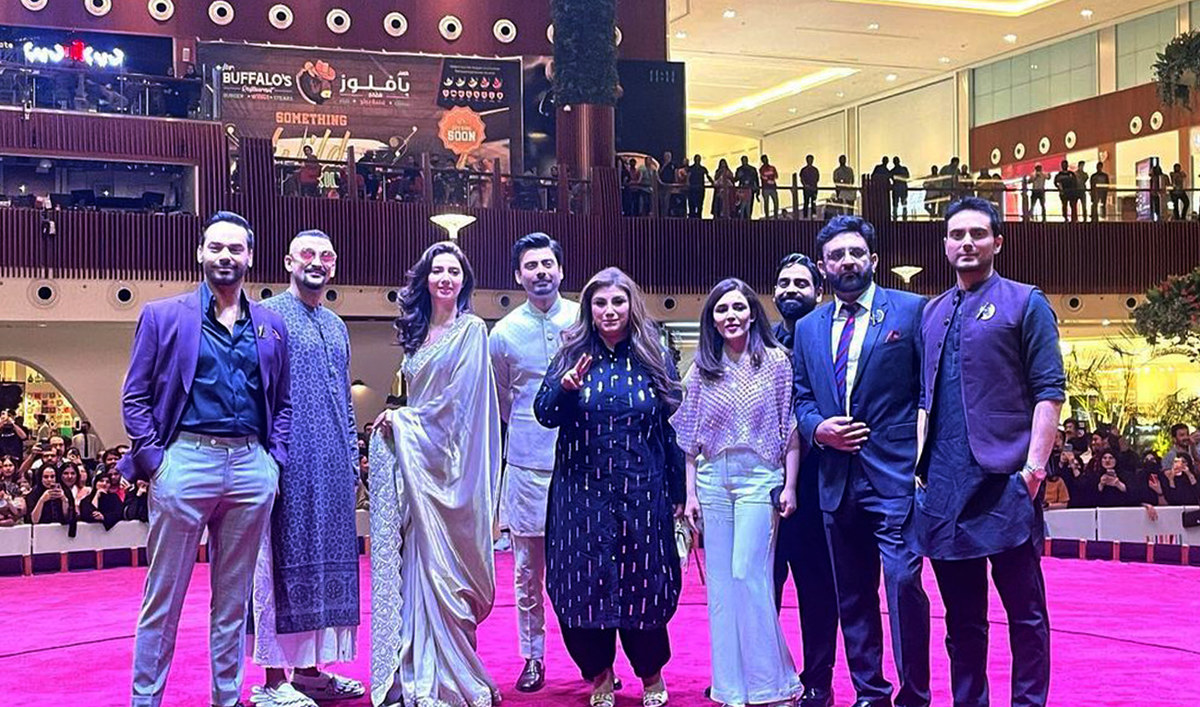KARACHI: Despite raking in impressive numbers overseas and attracting critical acclaim, the highly anticipated Pakistani film ‘The Legend of Maula Jatt’ is not being screened by major Pakistani cinemas owing to a dispute between the distributor of the movie and cinema representatives.
The movie has, however, released in limited theaters across the country. The film’s distributor, Nadeem Mandviwalla, had pleaded with cinema representatives for “better terms and support” prior to the movie’s release, citing that it was the most expensive film made in Pakistan to date.
He asked cinema representatives to raise the prices of tickets for the first 11 days of the film’s release, with the additional amount going to the producers.
Cinema owners and representatives, on the other hand, had reservations, citing rising operation costs. They objected to the increased cost of tickets, saying that higher-priced tickets would mean a decrease in footfall in cinemas which would ultimately impact revenue.
At the time of the film’s release, 34 out of 38 cinemas agreed to the terms and released ‘The Legend of Maula Jatt’ on their screens. The remaining four that did not agree to the terms are Nueplex, Cinepax, Cinestar and Arena cinemas.
Released on October 13, 2022, ‘The Legend of Maula Jatt’ features an ensemble cast that includes some of the biggest names in Pakistan’s showbiz industry, such as Fawad Khan, Hamza Ali Abbasi, Mahira Khan and Humaima Malick.
The film has been released in major cinemas across the world. However, prominent Pakistani cinema chains such as Nueplex Cinema, Cinepax and Cinestar are not screening the movie amid the stalemate between the producer and cinema representatives.
On Thursday, Mandviwalla, the owner of the film distribution company Mandviwalla Entertainment and official distributor of ‘The Legend of Maula Jatt’, addressed the controversy at a press conference.
“We asked for an extra 10 percent share [of ticket prices] in the first week [of the film’s release],” he told reporters.

The cast members of the newly released Pakistani movie, The Legend Of Maula Jatt, pose for a group picture at the world premiere in Doha, Qatar on October 16, 2022. (Instagram/fawadkhan81)
Mandviwalla heaped praise on ‘The Legend of Maula Jatt’, saying never before in the history of Pakistani cinema had a movie like this been helmed. He said that as a result, he had decided to come up with the strategy to maximize revenue from such a flick.
In its opening weekend, the film raked in an impressive $2.3 million worldwide, according to the official figures. The movie performed the best in the UAE, where it made a whopping $289,739 on the opening weekend, followed by Canada and Australia.
The combined box office collection from the Gulf countries stood at $515,000 by the end of the first weekend.
“Universally, whenever mega productions are released, cinema owners or groups support such films by giving more screens so that maximum box office collections are done in the initial fortnight,” added Mandviwalla.
Mandviwalla said that when the opposite happens and there aren’t many screens available, admission rates are increased and a higher percentage of the box office is shared with film distributors.
“The objective is to assist the film’s box office collection in the initial period and support distributors and producers without sacrificing the revenue of the exhibitor,” he explained.
“A win-win for all.”
Mandviwalla said the film is expected to surpass the Rs 20 crore ($902,708) mark in Pakistan, adding it would be a historic feat and that too when almost 50 percent of the cinemas are not screening the movie.
“The highest [opening] week in Pakistan till today [has been claimed by] Sanju (Bollywood film), that is, Rs 18 crore ($812,437),” he said. “Both are non-holiday figures,” he told Arab News on the sidelines of the press conference.
The official box office numbers for the film’s first week in Pakistan have not been announced yet.
“We designed the strategy targeting the Rs 100 crore ($4,513,543) figure and for that, we needed to make Rs 40-50 crores ($1,805,417-$2,256,771) in the first eight days,” Mandviwalla added.
Mandviwalla said the film’s producers were on board with the strategy to increase the film’s revenue.
“The plan we came up with was based on the calculations made accordingly, with agreement from the film’s producers,” he reiterated.
He said it was not possible for him to “go back” on the terms agreed upon as 34 out of 38 cinemas had agreed to them, which Mandviwalla said were the same for everyone.
Adnan Ali Khan, general manager of marketing and sales of Cinepax Cinemas, told Arab News that the distributor initially said the movie is “a one-of-a-kind film and asked to raise the ticket price and [demanded] more share than the usual agreement.”
“Given the operation cost for the cinema, we wanted to stick to the old formula and terms set for previous films. Negotiations are still going on,” Khan said, hinting that both sides were expected to come to an agreement.















